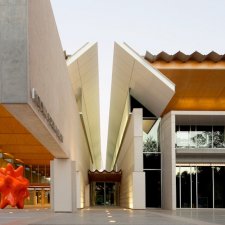- About us
- Support the Gallery
- Venue hire
- Publications
- Research library
- Organisation chart
- Employment
- Contact us
- Make a booking
- Onsite programs
- Online programs
- School visit information
- Learning resources
- Little Darlings
- Professional learning
Charles Perry (1807–1891), Anglican bishop, was consecrated the first Bishop of Melbourne at Westminster Abbey in 1847. Educated at Harrow and Cambridge, Perry initially trained in law but was ordained into the Anglican Church in 1836, his pastoral interests formed while he was working as a tutor at Trinity College. His interest in theological education and work on behalf of the Church Missionary Society resulted in his being nominated for the position of bishop for the diocese of Melbourne. When Perry arrived in Melbourne in 1848 the diocese had a population of 43,000 and its pastoral work was handled by three chaplains based in Melbourne, Geelong and Portland. Supporting the participation of lay people in the church, Perry alleviated this shortage of clergy by appointing colonists as readers. In 1850, along with five other Australasian bishops, Perry advocated self-governance of the Australian Anglican Church, leading to the establishment of the first synod of the Anglican Church in Australia in 1856. In the mid- 1860s, following the extraordinary population growth created by the gold rush, Perry put a case for the subdivision of his diocese, leading to the creation of the Ballarat diocese in 1873. Perry also made strong contributions to the establishment of the Melbourne Grammar School and the Geelong Grammar School. While he was considered a traditionalist, he lectured frequently in the 1860s on the need for the Church to engage with new scientific theories. Contemporaries described Perry as a paradoxical figure, who could be affectionate and confiding as well as severe, stern and uncompromising in his doctrinal beliefs. His term as bishop ended in 1874 and he returned to England, where he continued to serve the Church.
Collection: National Portrait Gallery
Purchased 2009
Henry Weigall Jnr (age 47 in 1876)
Thomas Atkinson (age 59 in 1876)
Dr Charles Perry (age 69 in 1876)



On one level The Companion talks about the most famous and frontline Australians, but on another it tells us about ourselves.



Visit us, learn with us, support us or work with us! Here’s a range of information about planning your visit, our history and more!



We depend on your support to keep creating our programs, exhibitions, publications and building the amazing portrait collection!